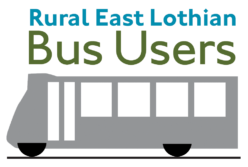Morag Haddow started promoting safer cycling and walking to school while she was a member of the Parent Council at Dunbar Primary. She now works part time for Sustaining Dunbar on green transport issues. She is studying for an MSc in Transport Planning at Napier University.
Last summer the RAC estimated that the average car cost its owner over £6000 a year to keep on the road. It’s hard to believe, and perhaps your own car costs you less than that, but from time to time it’s useful to consider how expensive our car habit really is, and maybe to think again about how we get about. Do we all really need a car sitting on standby 24 hours a day when modern technology makes it easier than ever to work from home and have shopping delivered? East Lothian is leading the way in alternative transport in Scotland with locally run car clubs such as SpareWheels in Dunbar providing an alternative to owning a personal car but sometimes driving and parking is a hassle in itself. Have you considered getting the bus?
Most people don’t.
Why not? Well, partly because it seems expensive. For example, a return from Dunbar to Haddington will set you back £7.10, but when you consider you get the privilege of having your own driver and no maintenance, insurance or cleaning, suddenly it doesn’t seem so unreasonable. You can get a lot of bus tickets for £6000 a year, and the odd taxi when you need it. And a holiday in the South of France.
For me, the main issue with the buses that no-one seems to know where they go. Even if you can work out which service you need and pick up the correct timetable, route maps are thin on the ground. Can you get to Tantallon Castle by bus? I don’t know.
There a whole new market of car owners who are thinking about cutting back on their car use, for cost or environmental reasons, ready to be won over to the local bus service. For rural businesses and attractions, have you considered how you will cope if rising fuel costs mean people are more reluctant to get in their car for a day out? Is there scope for joint promotion? For buses companies, local businesses and attractions to get together for their mutual benefit?
In Edinburgh and elsewhere buses associated with a particular route are given a name e.g. ‘3A The Lady Victoria’ which passes the former Lady Victoria Colliery in Newtongrange. This makes identification easier for everyone. In East Lothian there is just as much scope to do this to celebrate our heritage and tourist attractions. I suggest that we need to look at each local route in detail and start to build identities for each.
‘Friends of the Seaside service’
As we start to put together an identity and a story about each route, there will be people and places along the way who want to become involved. It may be that informal ‘friends’ groups start to come together. This could include the passengers, the bus driver, representatives of businesses and community councils along the way. Everyone would be working together to promote the service, to tidy up bus shelters, to ensure the correct signage is in place, and to produce dedicated and branded timetables. ‘Friends’ may also distribute timetables and posters to local shops, pubs and other businesses.
Tourism
Visitors to East Lothian often arrive by train or are making day trips from Edinburgh. How much easier for them if they can pick up a timetable showing all the local attractions? A branded leaflet showing a walking route could encourage people to take the bus and explore the area on foot. Destinations along the route might be encouraged to offer discounts to people who arrive by bus in return for advertising on the dedicated timetable.
Local journeys
It is important not to forget local journeys. Many trips are (or could be) simply to the shops and home again. From surveys we’ve done at Sustaining Dunbar we’ve discovered that many local people have never been on a local bus. Not only is it a novel form of transport for them, but it is shrouded in a degree of mystery. Many simply don’t know where they go, or where to catch them, let alone the cost. Friends groups could start to raise the profile of the local service by talking about it. Bus shelters could be used for community information as well as timetables. Information about local events could be available on the buses.
Is this a new idea?
Not really. As far as I know, it’s never been tried with buses, but Community Rail Partnerships have been around for over 20 years, contributing to triple-digit passenger growth on some lines. By sharing the responsibilities they have helped improve services and fostered a positive media image. They also offer the potential to attract external funding.
Community Railways now carry around 40 million journeys per year, and although they often provide a tourism service, they are different to ‘heritage railways’ which are tourist attractions in their own right. Commercial rail companies operate the services and Network Rail own and maintain the track, signalling and stations.
Let’s try it out with our local buses.
